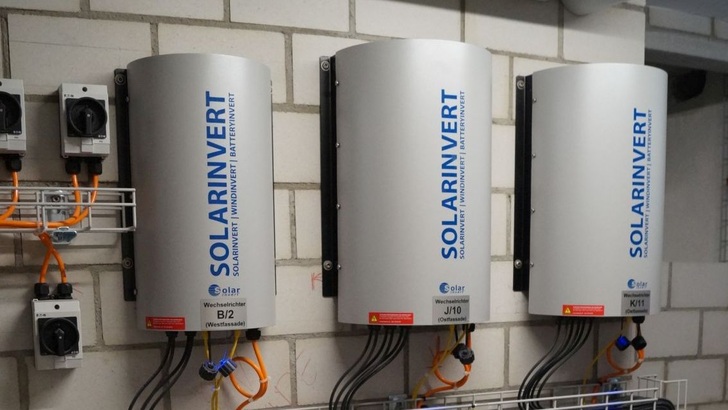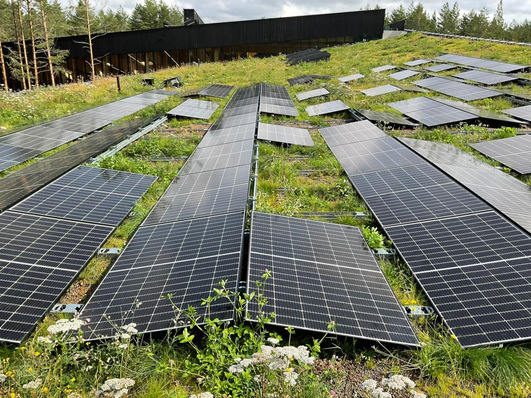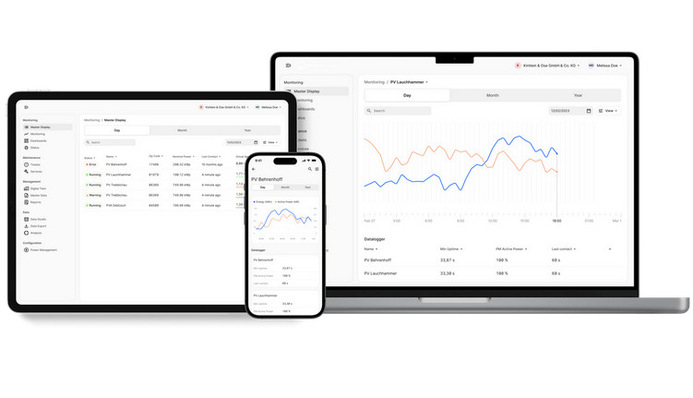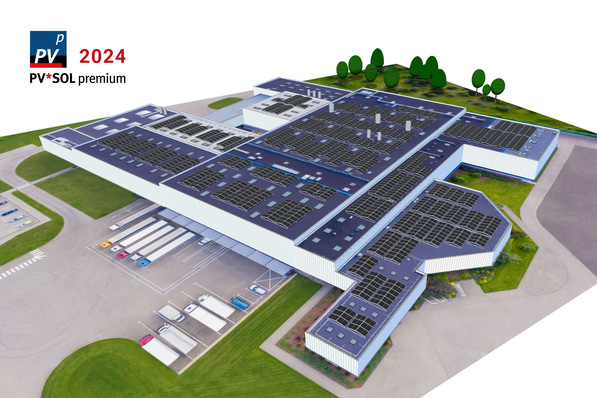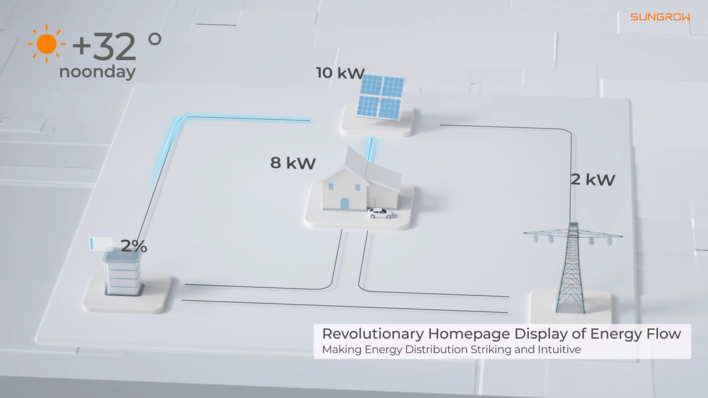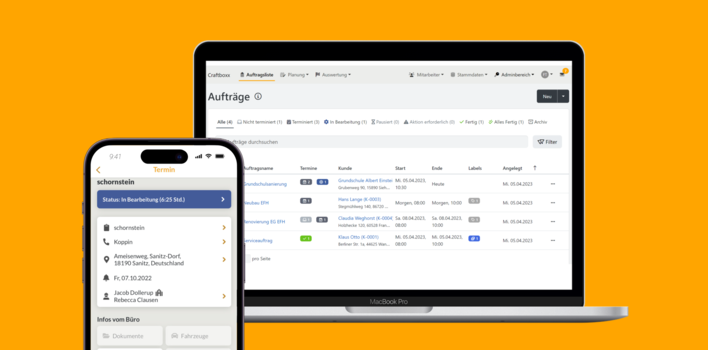In PV, everybody knows this: Normally the panels of a solar string are connected in series in order to get the most out of the inverter’s voltage – as much as 1,000 volts. In the case of very small installations as well as in solar facades, this can lead to issues. A small number of solar panels means low voltage, often too low for the most common string inverters. And: In case of partial shading – which almost always happens with solar facades – things become even more complicated.
In such cases it is advisable to connect the panels in parallel, and also use special small-scale inverters. SolarInvert in Freiburg am Neckar has been offering such systems for years. They call it a PPI (Professional Protecting Inverter). Using this, it is possible to get the most out of small solar generators or solar facades, even though it would be expected that shading is bad for yields.
Inverters comply with the VDE AR 4105
SolarInvert’s new SolInvert inverters comply with the German standard VDE AR 4105, which governs the connection of decentralised generators to the grid. The panels are connected in parallel, which does result in a low system voltage for the entire string. On the other hand, yields are much higher than in serially connected strings and the effect of roofs being partially in shade is negligible.
It is well-known that solar strings connected in series are only as efficient as their least-performing cell. If only one panel is in shade, that has a significantly detrimental effect on the overall yield. In order for the flow of electricity not to be cut off entirely, a bypass diode bridges the effected panel.
The sad story about shade
Shade on roofs; technicians and roofing contractors have sad tales to tell about that: Dormers, chimneys or air vents often cast shadows onto the solar array on the roof. Buildings or trees in the vicinity also put the panels into shade. Such roofs have so far been of little use in photovoltaics, but actually do have great potential.
The same is true for solar facades: It is not enough just to mount the panels onto the wall. Electrical wiring can be a challenge. Demounting a solar panel 8 metres up a wall to replace the micro-inverter or DC optimiser behind it is far from trivial. “That is why we bring all strings of the solar facade together to connect them to our inverters. And that in an accessible service room,” as Ralf Kleinknecht, CEO of SolarInvert, explains. “We did that in the case of a building in Zurich, where all four sides were covered in solar facades, even the north-facing one. The total connected solar output was 29 kilowatts.
New circuit boards
The new generation of low-voltage inverters has been fitted with new circuit boards which are specifically designed for the integration of wall-mounted installations. So far, installing companies still shy away from small-scale roofs, mostly because they tend to be shaded. This is a small market and the SolInvert is in direct competition with the well-known DC optimisers. Generally speaking, the trend is going towards larger installations between eight and ten kilowatts, which is a consequence of increasing self-consumption.
Until now, there were no suitable solutions for the electrical connection of the panels in solar facades. Because their electronics were optimised for low-light conditions, the PPI inverters might now give new momentum to building-integrated photovoltaics. And they can also be used for solar panels mounted on balconies.
Greater safety, better service
Two factors are critical for solar facades: On the one hand, the connection technology needs to be easily accessible, i.e. not be mounted to the panels themselves or directly behind the facade. That would have fire-safety repercussions, in case of a hot spot in the electronics as a result of, e.g., a faulty connection. “Under certain circumstances the bypass diodes can become quite hot,” Ralf Kleinknecht explains. “The heat produced by solar panels should not be underestimated.”
On the other hand, maintaining the installation needs to be as straightforward as in regular roof-top solar arrays. To that end it is better to connect the solar panels to centrally located inverters by way of DC cables. Because they are connected in parallel, the DC voltage at the inverter is never above 70 volts.
Experience from thousands of installations
Such small-scale inverters have so far been integrated in a few thousand solar installations. SolarInvert has been in photovoltaics since 2003, back in the day developing and building the Solar Star 1,500 for Wuerth. This small-scale inverter was part of the zeitgeist at the time, as photovoltaics was much smaller then. The input voltage was limited to 70 volts, with 30 volts being the lower operation threshold. Two solar panels were always connected in series and this double-string was then hooked up in parallel.
Today the PPI has a DC voltage of between 50 and 80 volts, 110 at most. The maximum current is 30 amperes, and up to five stings can be connected. It includes an MPP tracker. This single-phase inverter has an AC output of up to 1.7 kilowatts, at 230 volts and almost seven amperes. A built-in transformer is used for galvanic isolation.
A solar tower with a wind turbine on top
Such small inverters also work for more unusual solar installations and the inclusion of wind turbines. SolarInvert offers wind power inverters with an output of 0.3 to 2.4 kilowatts. At a site in Unterhaching, a very prominent solar tower was erected that has four sides covered in solar panels. The total output is 5.44 kilowatts. The facades are connected by small-scale inverters of 2,2 kilowatts each. “As soon as the sun is out, the tower constantly produces electricity throughout the day, until sunset,” Ralf Kleinknecht says.
CIS panels were used; naturally, some parts of the installation are always in shade. This solar obelisk was augmented by a small wind turbine (Turbina TE 20 producing one kilowatt) at its tip. A supply point for charging electric vehicles is also included.
No arcs, no losses, no PID
Low voltages at the inverter have some neat advantages: If a weasel chews through the wires, the risk of electrical arcs is very low. This is highly significant for fire safety in solar facades. Any technical faults or errors while installing just do not have such severe consequences as in a system that runs on 800 or 1,000 volts.
Even worse are defects in junction boxes, cold solder joints, loose screws, imprecisely bent connections and badly built cell connectors within the panels. This is where electrical arcs can form in a very small area – much-feared hotspots that cannot be seen by the naked eye. To keep such risks to a minimum it is advisable to keep the voltage on the DC side as low as possible.
Because the Solarinvert PPI’s panel pairs are always connected in parallel, the currents running through the separate sets of wires are never higher than that of a single panel. Even though the voltages are low, there is no need for wires with a large cross-section.
Furthermore, connecting the panels in parallel avoids premature loss in output due to potential induced degradation (PID), which is brought about by high voltages. (Heiko Schwarzburger)
Maybe you are also interested in those:
Solar panel producer Luxor Solar flew below the radar and continues to grow
1.4 MW Solar Frontier installation provides energy to Italy’s biggest shopping center near Milano
Mosques in Morocco go green – PV, solar thermal and LED – tender for 64 mosques

